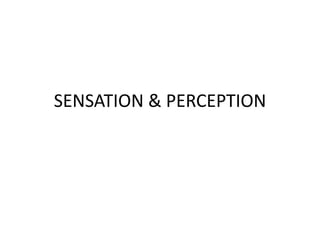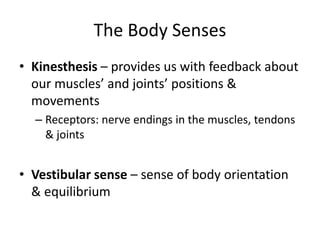1. Sensation is the detection of environmental stimuli by the sense organs, while perception is the process of organizing and interpreting these stimuli.
2. Sensory processing involves the transduction of stimuli into nerve impulses, feature detection in the brain, and the reconstruction of stimuli from neural representations matched with prior experience.
3. Psychophysics studies the relationship between physical stimulus characteristics and sensory capabilities. Signal detection theory holds that perception involves uncertainty and decision-making rather than fixed thresholds.















































